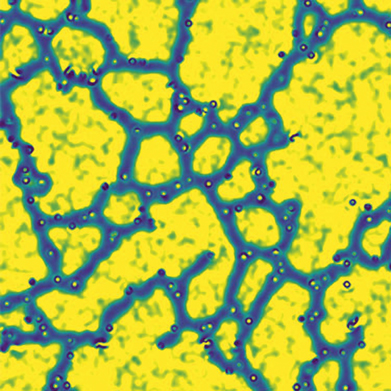Published online by Cambridge University Press: 10 May 2018

It is curious that first-principles quantum simulations for establishing the electronic structure and bonding patterns of molecules and materials are conducted using fields, yet the standard theoretical approach to understanding their thermal behavior, phase transitions, and self-assembly on larger length- and time scales relies on classical force fields acting on particle degrees of freedom. This article discusses how equilibrium models of classical particle assemblies can be exactly reframed as statistical field theories, and how these theories can be numerically simulated. Today, such field-theoretic simulations have emerged as a highly efficient way to study phase transitions and self-assembly behavior in broad classes of soft materials, including block polymers, polyelectrolyte complexes, and polymeric emulsions.
The following article is based on the Materials Theory Award presentation given by Glenn H. Fredrickson at the 2017 MRS Fall Meeting in Boston, Mass. Fredrickson was recognized “for pioneering the development of field-theoretic computer simulation methods and their application to investigate and design self-assembling polymers and soft materials.”